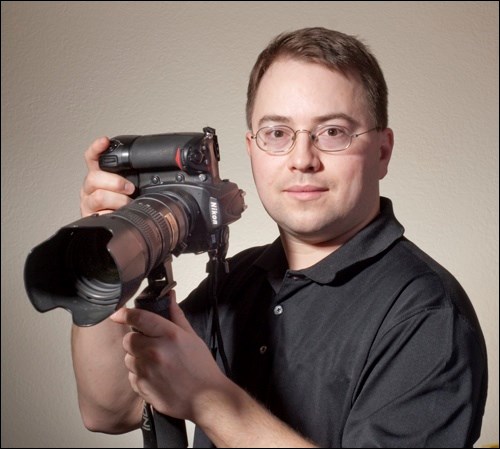For years we've heard how the Internet will shake up education with online learning. For a long time it was nothing but blah, blah blah, whatever. Instead of reading a textbook, you were reading it on your screen. But in the past couple years, that changed, and now the world will never be the same.
The adoption of video in online tutorials, workshops and webinars has been absolutely remarkable in its impact for those who seek them out. In my case, that's been in the realm of photography.
There was a time when, to become a "serious photographer," an aspiring student should have been accepted into the fine arts program of a reputable university. There they would learn about composition, art history and become intimately aware of the not-so-wonderful smells of a wet darkroom. If you were to do that today, I would suggest you were a fool.
In part that is because photography is not engineering, nor is it brain surgery. It's relatively simple. The other part is the wealth of online resources available now, most of them for free.
I use specialized software packages in post-processing to take a good picture and make it spectacular. One of the software packages I use is called the OnOne Suite. OnOne software has what they call their "university" of training videos and archived webinars. Go through these and you will soon find incredibly good instruction just a click away. Instead of reading about it in an inch-thick book picked out of the obscure photography section of Chapters, you are taken click-by-click through the process.
A webinar is a video tutorial on steroids. They allow participants to watch on their screen in real time, often cutting away to show exactly what is on the instructor's screen. A chat function allows students to ask questions and have them answered immediately or in a Q and A session afterward. You become an active participant with a live human being on the other end of the screen.
Professional Photographers of Canada, the professional organization I belong to, has hosted many of these webinars.
Adobe, the software giant behind Photoshop and Lightroom, has hundreds of online tutorials on their tv.adobe.com site. Then there are paid sites, like Lynda.com and KelbyOne.com, which are also incredible resources.
The one that has really shaken things up, however, is creativeLIVE, found at creativelive.com. Initially focused strictly on photography, they now offer training in video, art and design, music and audio, maker and craft, and finally business and money.
The instructors are often some of the top people in the field, the ones who headline huge photography events like WPPI, the Wedding and Portrait Photographers International convention I have attended in Las Vegas for the last three years. Usually at this time of year I would be busy packing, eager with anticipation of standing in line to see each of these speakers for two hours on a stage, trying to madly scribble as many notes as possible before going into the next two-hour session. A three-hour breakout session with a group no larger than 40 would cost an additional $50 or so, and a daylong workshop added a few hundred dollars. One week at WPPI is worth a couple years of wandering through the wilderness on your own, trying to figure things out.
On creativeLive, they offer seminars that will last up to five days, up to six or seven hours per day, with each of these luminaries. Sue Bryce even had one program that lasted a month. If you watch live, you can send in questions by Twitter or chat and have them answered in real time. If you don't have time during the day, it is rebroadcast that night once or twice.
The wonderful thing is about these seminars, usually three days long, is that they are free during the broadcast. If you want to buy a downloadable copy of the entire session, be it a day or a week, it's usually $99 during that week and $149 after the deadline. A few sessions are higher, depending on the subject. That's still a heck of a lot less than a trip down to Vegas, with overpriced rooms and food. Plus you can watch it at your own leisure, at home.
It's also significantly cheaper than a university degree. Pretty much every hour of these seminars is chock-full of useful information, so much so that they know many people will pay for it later because they can't take enough notes during the event.
It's taken a while, but the Internet has finally matured to become an extremely powerful learning tool. It's ironic that to do so, it had to start acting like a classroom in real life.
- Brian Zinchuk is editor of Pipeline News. He can be reached at [email protected]




